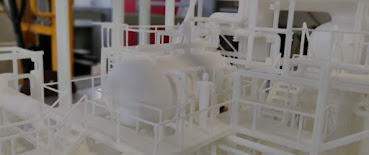How Is Large Format 3-D Printing Changing Prototyping
Product development has traditionally depended critically on prototyping. It gives ideas in physical form so that engineers and designers may spot early faults. Large-format 3D printing prototyping (3d druck prototyp) has revolutionized this method to provide scalable systems with more precise designs and speed. Designers don’t have to be limited to style or design anymore. They can now see their ideas in full-scale models before the start of manufacturing.
Precision and Scale Combined
Large-format 3D printing combines amazing scale with exact accuracy. Designers are not required to divide big projects into smaller components anymore. One coherent model produced from full-scale prototypes preserves the integrity of the design. It reduces the weak areas brought on by connecting several pieces. Large models are free of warping or distortion because of technologies such as Thermal Liquid Curing (TLC).
Improving the Design Process Speed
Traditional prototyping can be labor-intensive for big models. Molds hinder the development schedule by taking weeks to generate. Big-format 3D printing cuts the delays. According to the complexity of the design, the designers can start from a digital design and work toward a physical prototype in days or even hours. This speed enables quick iteration and helps quick testing of modifications and rapid design improvement. You can improve your product faster with an illustrative model (anschauungsmodell).
Materials Designed with Functionality
Different prototypes need different materials, and correct material choice improves results. Modern 3D-printed materials are remarkably durable and flexible. Certain materials can resist stress, manage moving components, or replicate actual textures. Materials intended for electrical components or machine parts, for instance, ensure that prototypes behave like intended finished goods.
Financial Effectiveness and Sustainability
Huge cost savings come from large-format 3D printing. Long setups or costly molds are not necessary. Advanced 3D printing methods recycle leftovers and reduce waste. This strategy encourages environmentally friendly manufacturing methods in addition to cost control. Businesses and designers gain from a simplified procedure that respects the environment and costs.
Uses in Diverse Fields
Large-form 3D printing benefits architecture, automobile, aerospace, and product design among other fields. For improved spatial awareness, architects might design full-scale architectural models. Functional components and big body panels for automotive designers. In aeronautical, components can be designed to provide strength and accuracy. There are countless uses, only limited by your imagination!
About Additive Elements:
Additive Elements specializes in advanced 3D printing art (3d druck kunst) solutions. The company offers high-quality large-format prototyping through innovative Thermal Liquid Curing (TLC) technology. It uses precise structural and functional components to provide architectural models and more.
For more information, visit https://www.additive-elements.de/





Comments
Post a Comment